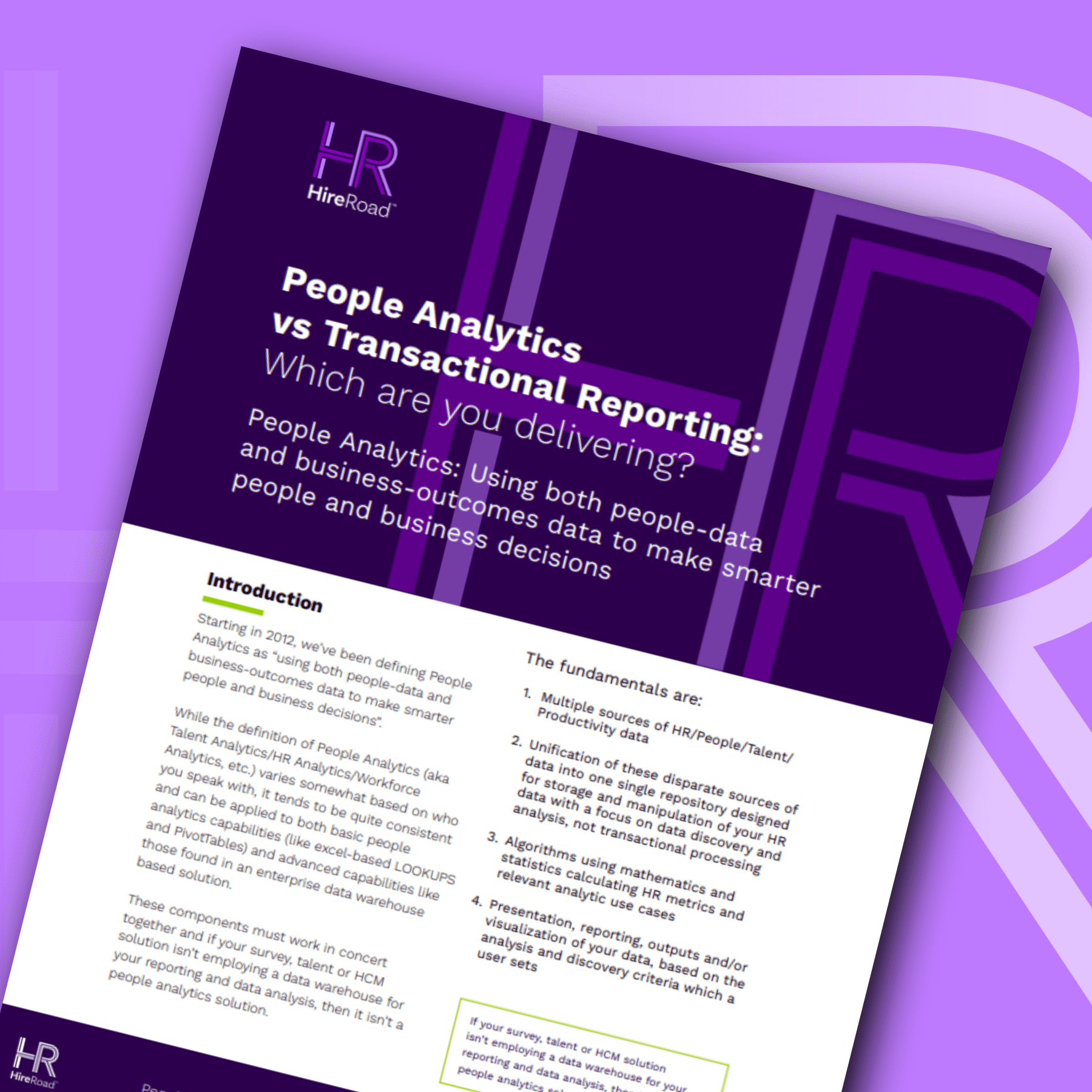Which are you delivering?
Definition of People Analytics: Using both people-data and business-outcomes data to make smarter people and business decisions
Starting in 2012, we’ve been defining People Analytics as “using both people-data and business-outcomes data to make smarter
people and business decisions”.
While the definition of People Analytics (aka Talent Analytics/HR Analytics/Workforce Analytics, etc.) varies somewhat based on who
you speak with, it tends to be quite consistent and can be applied to both basic people analytics capabilities (like excel-based LOOKUPS
and PivotTables) and advanced capabilities like those found in an enterprise data warehouse
based solution.
These components must work in concert together and if your survey, talent or HCM solution isn’t employing a data warehouse for
your reporting and data analysis, then it isn’t a people analytics solution.
The fundamentals are:
- Multiple sources of HR/People/Talent/ Productivity data
- Unification of these disparate sources of data into one single repository designed for storage and manipulation of your HR
data with a focus on data discovery and analysis, not transactional processing - Algorithms using mathematics and statistics calculating HR metrics and relevant analytic use cases
- Presentation, reporting, outputs and/or visualization of your data, based on the analysis and discovery criteria which a user sets
If your survey, talent or HCM solution isn’t employing a data warehouse for your reporting and data analysis, then it isn’t a people analytics solution.
Download the eBook below to see the full difference between people analytics and transactional reporting.
